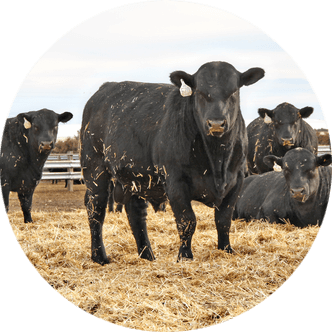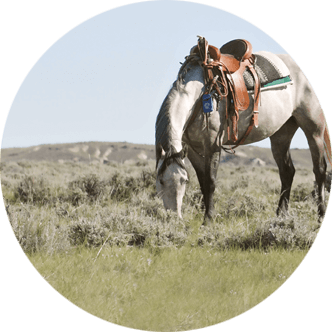Industry looks to new formula for fair H-2A wage rates
For years, H-2A wages have been a hot topic in the sheep industry, especially after the U.S. Department of Labor implemented major changes to the program’s formula a few years ago, causing the base price to skyrocket from roughly $720 per month to more than $1,600 seemingly overnight.
“We realized this could be a significant issue for the lamb industry,” said Bridger Feuz, University of Idaho (U of I) Extension associate director and former University of Wyoming (UW) Extension associate director. “The problem is the labor rate is not tied to the market rate, so even when lamb prices are depressed in tough years, labor costs keep rising.”
Feuz presented ongoing work from UW and U of I personnel to develop a more accurate, market-based formula for H-2A wages during the West Central States Wool Growers Convention, held Nov. 7-8 in Cody.
Creating a new approach
Feuz noted he started working on an approach to fair labor wages years ago, and at the request from Wyoming producers to resume the project, it was picked up by former UW Livestock Production and Marketing Extension Specialist Rob Ziegler, who then transferred it to U of I Rangeland and Natural Resource Economist Jessica Windh.
Windh is the current force behind today’s work, where she is exploring whether the sheep industry could benefit from a formula similar to the Public Rangelands Economic Analysis grazing rate – a model which ties federal grazing fees to market indicators like forage values, beef prices and production costs.
Windh’s approach is to calculate labor wages reflective of current markets using a few main components – a base wage, which is historically $750 a month; wool and lamb price indexes and a prices-paid index, which represents overall production costs.
“The prices-paid index is really the cost of production,” Feuz stated. “We want to make sure labor isn’t outpacing the cost of production. It should be in line with other inflationary factors causing prices paid to go up and a function of lamb and wool prices.”
Windh looked at data from 2011-24 to produce wage estimates reflecting actual market conditions. According to her findings, if the market-based formula had been applied over this period of time, the calculated H-2A wage rate would have ranged between $750 to $1,255 – roughly one-half of the current mandated rate.
“Windh’s findings indicate from 2011-24, a wage increase of 14 to 40 percent would have been more on par with the sheep industry’s growth,” Feuz said. “In reality, the actual wage increase during this time was 165 percent.”
“We’re not saying we shouldn’t increase wages, we’re just saying it should be more in line with other costs of production, and this model will help us achieve this,” he added.
One of the challenges with the formula, however, is year-to-year volatility. Because lamb markets can swing sharply, it may cause corresponding dips or spikes in calculated wages.
To address this, Windh’s research team – in collaboration with the House Committee on Agriculture’s Agricultural Labor Working Group (ALWG) – discussed utilizing an averaging technique.
“One of the conversations we had was looking at three- to five-year averages to smooth out the highs and lows,” Feuz shared.
Under this system, he said a three-year average for 2024 would produce a recommended wage of $1,059, while a five-year average would come in around $992. Wages would only increase if consecutive multi-year averages showed sustained growth.
“From whatever value we decide to start with, we can increase the wage rate if two consecutive three- to five-year averages show it is higher than the current wage rate,” Feuz added. “This helps level wages out and gives producers more stability.”
Handing it off to the industry
While Windh’s new market-based formula will provide a valuable framework moving forward, Feuz said implementing it will require industry collaboration and buy in from agencies who oversee labor regulations.
He also emphasized, while Extension’s role is to help develop, explain and support the model, producers and industry organizations are responsible for the next steps.
“It’s time for the industry to take the ball and run with it,” he said. “We’re happy to support and explain how it works, but ultimately, you guys have to decide what to do as an industry in regards to implementing this.”
Feuz also pointed out transitioning to lower mandated wages would require careful planning, likely through a phased-out approach or flexible bonus structure to reward higher-performing herders.
“What do you think is going to happen to our herders if we cut all of their wages by half? It’s going to be a challenge,” he said. “We all know there are herders who earn every penny they make and others who might not be worth the mandated rate. This gives managers more flexibility to make decisions on how wage rate is distributed while keeping wages fair and realistic.”
Additionally, Feuz called on wool grower associations across the West to band together and coordinate in bringing a unified proposal to the American Sheep Industry Association.
“This is the first time we’ve had a solid, data-driven formula for H-2A wages,” Feuz said. “It’s modeled after proven systems, it reflects market realities and it gives us a foundation for real discussion.”
“Banding together is how we make change,” he continued. “This formula doesn’t just put numbers on paper – it gives the industry a chance to shape a fair and sustainable future for our labor force.”
He concluded, “Those of you here today have some power when moving forward. I know there are producers, folks on the working group and state representatives and senators who want to move this forward. You guys ultimately have to decide what to do as wool grower’ associations.”
Windh’s full white paper has been shared with members of the ALWG, and producers can access the paper through their state wool grower association executive directors.
Hannah Bugas is the managing editor of the Wyoming Livestock Roundup. Send comments on this article to roundup@wylr.net.





